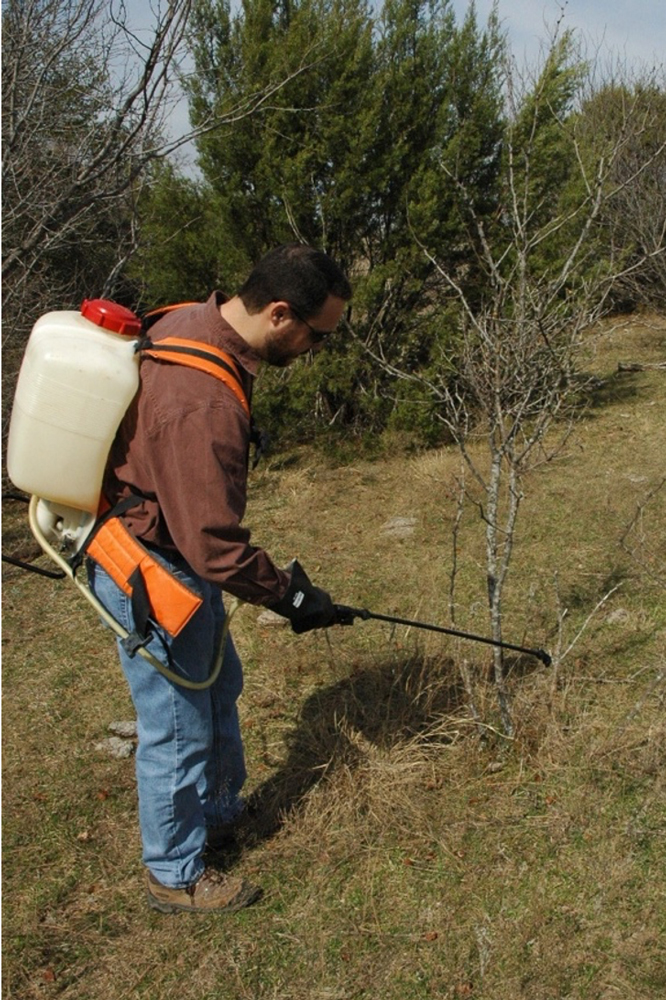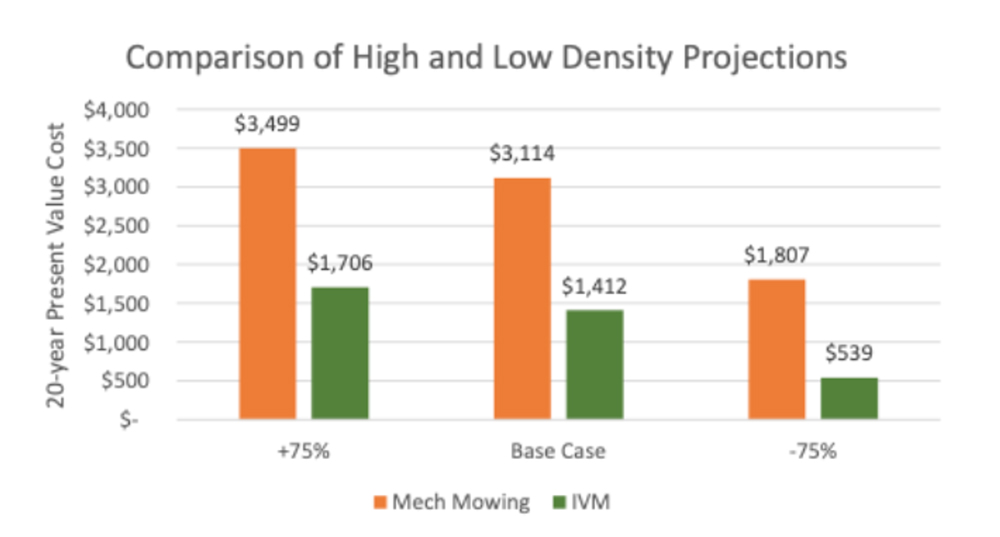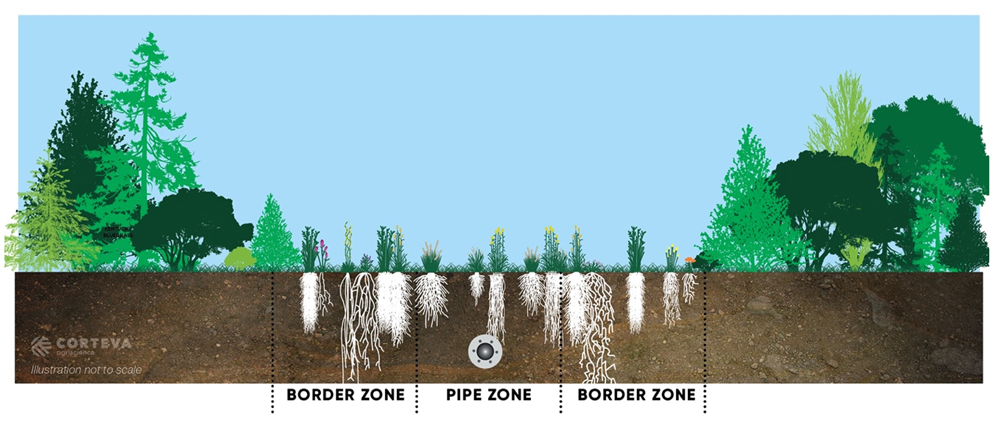June 2023, Vol. 250, No. 6
Features
Adapting ROW Strategies to Sustainability, Public Perception
By Darrell Russell, Vegetation Management Specialist, Corteva Agriscience
(P&GJ) — Pipeline infrastructure and operations raise two common concerns among landowners and other public entities: greenhouse gas (GHG) emissions and ecosystem disturbance.
As industry leaders continue setting goals and implementing actions to offset these recurring headwinds, an immediate opportunity to improve environmental sustainability and public perception has emerged – and it lies within the area of vegetation management.
“Pipeline rights-of-way (ROW) possess so much untapped potential,” said Will Hatler, field scientist, Corteva Agriscience. “With so much land to manage, the strategies vegetation managers use to control undesirable vegetation throughout these expansive landscapes can significantly impact the environment as well as the organizations and communities they serve.”
Hundreds of thousands of miles of oil and gas pipelines occupy nearly 5 million acres of U.S. land. How can oil and gas companies successfully manage these expansive right-of-way corridors in a manner that not only maintains asset integrity and regulatory compliance but also enhances habitat management and community engagement? Moreover, what are the implications if they don’t?
Trees, large shrubs and other woody plant species represent some of the most prevalent issues throughout pipeline ROWs. When this undesirable vegetation develops within the pipe zone (0 to 5 feet from a pipeline) or border zone (5 feet from a pipeline to the ROW’s edge), it poses a threat to interfere with pipeline infrastructure. Failing to effectively control these woody plants can lead to multiple issues for vegetation managers, including:
- Restricted access to pipeline ROW
- Infrastructure damage caused by extensive root systems
- ROW safety concerns
- Failure to comply with regulatory guidelines, resulting in costly fines
- Recurring and potentially increased maintenance costs caused by vegetation regrowth
Given these adverse effects, industry practitioners are encouraged to selectively control incompatible brush species. Doing so supports the development of beneficial grasses and complex flowering plants that are more compatible with pipeline infrastructure.
Unfortunately, some pipeline vegetation managers have yet to see the benefit of using non-mechanical (e.g., mechanized mowing) practices to control these undesirable plants each year.
While a mechanical approach may generate immediate results, it inhibits desirable plant growth as well as program efficacy. Moreover, it is often more costly and has the potential to negatively impact the environmental sustainability of pipeline vegetation management programs.
Issue 1 – One of the most significant pitfalls of mechanized mowing is that it is a nonselective strategy that controls nearly all vegetation in its path. In other words, mowing practices provide short-term control of undesirable woody plants, but they also decimate beneficial plant communities and decrease habitat biodiversity for native wildlife species.
As mechanical strategies fail to control targeted plants selectively, they can negatively impact biodiversity and impede progress for environmentally minded oil and gas companies.
Issue 2 – Another environmental downfall of mechanized mowing strategies is the amount of carbon emissions they produce. According to the Environmental Protection Agency, burning a single gallon of gas produces nearly 20 pounds of carbon dioxide (CO2), and burning a gallon of diesel fuel produces more than 22 pounds of CO2.
Carbon footprint studies conducted by Asplundh Tree Expert also indicate that mechanized mowing equipment can require as many as 5 gallons of fuel to mow a single acre. In other words, oil and gas companies can expect to contribute nearly 11,000 pounds of carbon emissions for every 100 acres their contract partners mow.
“Each time you have an input with a mower, your vegetation is likely to come back even taller and thicker than before,” said Steve Hilbert, general manager, Technical Services, Asplundh Tree Expert. “Imagine if we had hundreds of thousands of acres that were managed with only mowing practices. We’re just going to be using more and more fuel.”
As oil and gas companies strive to reduce their own carbon emissions, as well as those generated by the products they provide, these insights suggest that exclusive mowing practices can be a detriment to their progress and public image.
ISSUE 3 – Due to budget limitations, vegetation management programs are often asked to do more with less – and mowing-based strategies don’t make things any easier. In addition to fuel costs and routine maintenance for mechanical equipment, programs that rely exclusively on mechanical strategies for vegetation control often encounter recurring treatment needs that can quickly deplete program resources.
That’s because mechanized mowing stimulates seed spreading and regrowth in targeted plants. Put simply, mowing leads to growing. And as incompatible stem counts increase, so do maintenance costs. To make matters worse, the expansive root systems of many woody plants can cause costly infrastructure issues, including broken joints, cracked pipes and other avoidable damage.
All of these issues pose the question: What can vegetation managers do to improve the environmental and economic impact of their respective programs without sacrificing results or productivity? Findings generated by years of environmental ROW research and adaptations in other industries have demonstrated that targeted applications of selective herbicides can help.
Herbicide Benefits
The State Game Lands 33 (SGL 33) research project in State College, Pennsylvania, has analyzed the ecological impact of different vegetation management strategies throughout energy rights-of-way since the early 1950s. With the help of funding partners, including Corteva Agriscience, FirstEnergy Corp., PECO Energy Company, Asplundh Tree Expert and TREE Fund, SGL 33 researchers with Pennsylvania State University (PSU) have cooperated with the Pennsylvania Game Commission to track the effects commonly used strategies have on natural resources.
Over a recent three-year period, SGL 33 research focused on the effects vegetation management strategies had on floral and faunal species throughout SGL 33. In addition to mechanized mowing and hand-cutting practices, various herbicide-based control methods were tested to support this analysis.
The apparent impact of these strategies on targeted vegetation, breeding birds, pollinators and other wildlife species was detailed in a report shared by SGL 33 researchers in 2022. Results shared in the report generally favored selective herbicide applications for biodiversity management efforts over mechanical treatments or nonselective herbicide applications. Noteworthy takeaways from the report include:
- The selective application of herbicides resulted in lower stem counts than those treated with mechanical control methods
- The abundance of breeding birds was consistently lower on sites treated with hand-cutting and mowing strategies
- Nearly all herbicide-treated plots featured a higher abundance of bees than hand-cutting and mowing plots
While mechanized mowing remains a viable option for ROW clearing and reclamation efforts, these results indicate how selective herbicide applications can improve mowing results as part of an Integrated Vegetation Management (IVM) program.

By following mowing treatments with targeted applications of selective herbicides, IVM programs can prevent the reestablishment of desirable vegetation, yielding landscapes that are compatible with both pipeline infrastructure and native wildlife.
“Some pipeline rights-of-way aren’t manageable from a habitat and conservation standpoint, but a lot of them are,” said Robin Rorick, vice president, Mainstream, American Petroleum Institute. “What we see are opportunities for companies to not only demonstrate a commitment to birds, butterflies and plants, but also their community. It really depends on a company’s willingness to look holistically at addressing the issues they commonly face.”
Reducing Costs
Employing IVM-based strategies to enhance native plant development impacts more than environmental sustainability for oil and gas companies; it also benefits their bottom line. The math is quite simple: As IVM strategies support the development of beneficial grasses and other flowering plants, these native plant communities form a natural barrier against the reestablishment of incompatible stems throughout the pipe zone and border zone.
Subsequently, applicators have less vegetation to control in these areas. This lowers maintenance input costs, allowing vegetation managers to reallocate resources to at-risk sites or other program needs.
These benefits are realized in the Least Cost Analysis study John W. Goodfellow, bio-compliance consultant, references throughout The Cost-efficiency of IVM report. To establish a business case for the use of IVM practices throughout energy rights-of-way, Goodfellow examined the durability of cost projections for IVM and mechanized mowing.
In addition to using a base case to assess stem densities for IVM and mechanical-only strategies over a 20-year period consisting of four-year treatment cycles, Goodfellow also created upper- and lower-cost projections by using two additional test scenarios to assess the impact of potential changes in stem density over time.
Base case stem densities were increased by 75% for the high-density scenario, and a 25% decrease was applied to the low-density scenario. This analysis showed that IVM programs improve results across all scenarios at a significantly lower 20-year projected value cost than repetitive mowing practices (Figure 1).

Goodfellow also examined the impact different cycle periods can have on IVM and mechanical control strategies. When comparing the effect of three- to six-year treatment cycles on 20-year present value cost predictions, IVM programs consistently demonstrated cost savings between 25% and 57% over exclusive mowing practices.
Average stem heights also were notably lower for IVM across all cycle periods. These results show how enhancing the efficacy of vegetation management strategies can help industry practitioners extend their treatment cycles and lower maintenance costs for sites maintained whenever the height of targeted plants reach their predetermined action thresholds.
Cutting Carbon
While carbon footprint studies conducted by Asplundh Tree Expert found that mechanized mowing equipment requires approximately 5 gallons of fuel per treated acre, this research also indicated that mechanized mowing requires five times more fuel than high-volume foliar applications. Comparatively, low-volume foliar and low-volume basal applications require no fuel whatsoever.
“When you’re looking at the uses of gas, oil and diesel fuel from the mowers, that’s a lot of carbon that’s being output into the environment,” Hilbert said. “There’s a tremendous opportunity if we have a mow-only program to change it over to IVM and help reduce that carbon footprint.”
Using herbicide applications as part of an IVM-based strategy not only produces significantly fewer carbon emissions than mowing practices, but also requires less time to complete. The following metrics from Asplundh research put this discrepancy into perspective:
- Low-volume basal treatments allowed applicators to treat between 0.62 and 0.9 acre per hour (ac/h)
- High-volume applications covered 0.9 to 3.06 ac/h
- Mechanized mowing covered just 0.51 ac/h
- Hand-cutting practices yielded a range of 0.04 to 0.09 ac/h
In addition to helping vegetation managers improve productivity, the use of selective herbicides as part of an IVM-based approach can help vegetation managers extend treatment cycles and lower incompatible stem counts.
Over time, these results can effectively reduce the amount of GHG emissions produced by mowing equipment and enhance the development of beneficial grasses and forbs that support carbon sequestration.
“Grasses and small forbs can help vegetation managers prevent woody plant seed germination,” Hatler said. “These beneficial plants also enhance biological control by providing habitat for small mammals that consume woody plant seeds. From carbon reductions and infrastructure protection to their positive impact on biodiversity, IVM strategies present a win-win-win opportunity for practitioners across the country.”
Public Perception
Since IVM activities mitigate carbon emissions and support environmental sustainability, participating programs have an opportunity to improve their standing in the court of public opinion. That’s because IVM strategies commonly qualify for environmental, social and governance (ESG) reporting if they prove to yield no net loss or net positive impact on biodiversity.
Corporate responsibility departments of oil and gas companies can choose to report IVM programming quantitatively or qualitatively on a variety of ESG indices. Each of these indices feature biodiversity sections that support the development of conservation framework, link IVM practices to quantifiable biodiversity metrics, and describe the environmental impact of habitat initiatives.
Since ESG reporting provides transparency to the values, ethics and actions of oil and gas companies, its value cannot be understated. As these entities commonly receive complaints about pricing, energy disruptions and their impact on the environment, ESG reporting provides an opportunity for organizations to develop and enhance public awareness of their commitment to conservation and environmental sustainability. As a result, this reporting can proactively offset any headwinds that oil and gas companies may encounter in the future.
Next Step
Awareness of the benefits IVM strategies provide is growing rapidly throughout the oil and natural gas pipeline industry. In fact, dozens of stakeholders from the energy industry gathered last summer for the 2022 ROW Sustainability Summit in State College, Pennsylvania, where they discussed best practices in vegetation management and environmental stewardship.
Presented by FirstEnergy, the Utility Arborist Association, Corteva Agriscience, PSU, Rights-of-Way as Habitat Working Group and the University of Illinois-Chicago, the educational event consisted of research presentations, working sessions and tours of SGL 33 sites.
These activities showcased the significant impact IVM practices can have on ROW safety, habitat management and programmatic cost efficiency. While industry practitioners can visit HabitatWithHerbicides.com to explore these insights further, how they apply their knowledge can influence environmental sustainability, ROW safety and the management of pipeline infrastructure for generations to come.
“There are huge opportunities for us to demonstrate our commitment to the environment and the communities in which we operate,” Rorick said. “Where possible, we really want to transition away from straight mowing programs and manage rights-of-way with more of a conservation and community engagement mindset. If we can create a maturity curve for the industry and allow companies to come in wherever they can, we can forge a path forward for conservation management.”
AUTHOR: Darrell Russell is a market development specialist in vegetation management with Corteva Agriscience. He uses more than 30 years of experience with agricultural solutions to provide technical support, product recommendations and industry best practices to vegetation management customers throughout the eastern United States. Russell is based in Atlanta, Georgia.






Comments